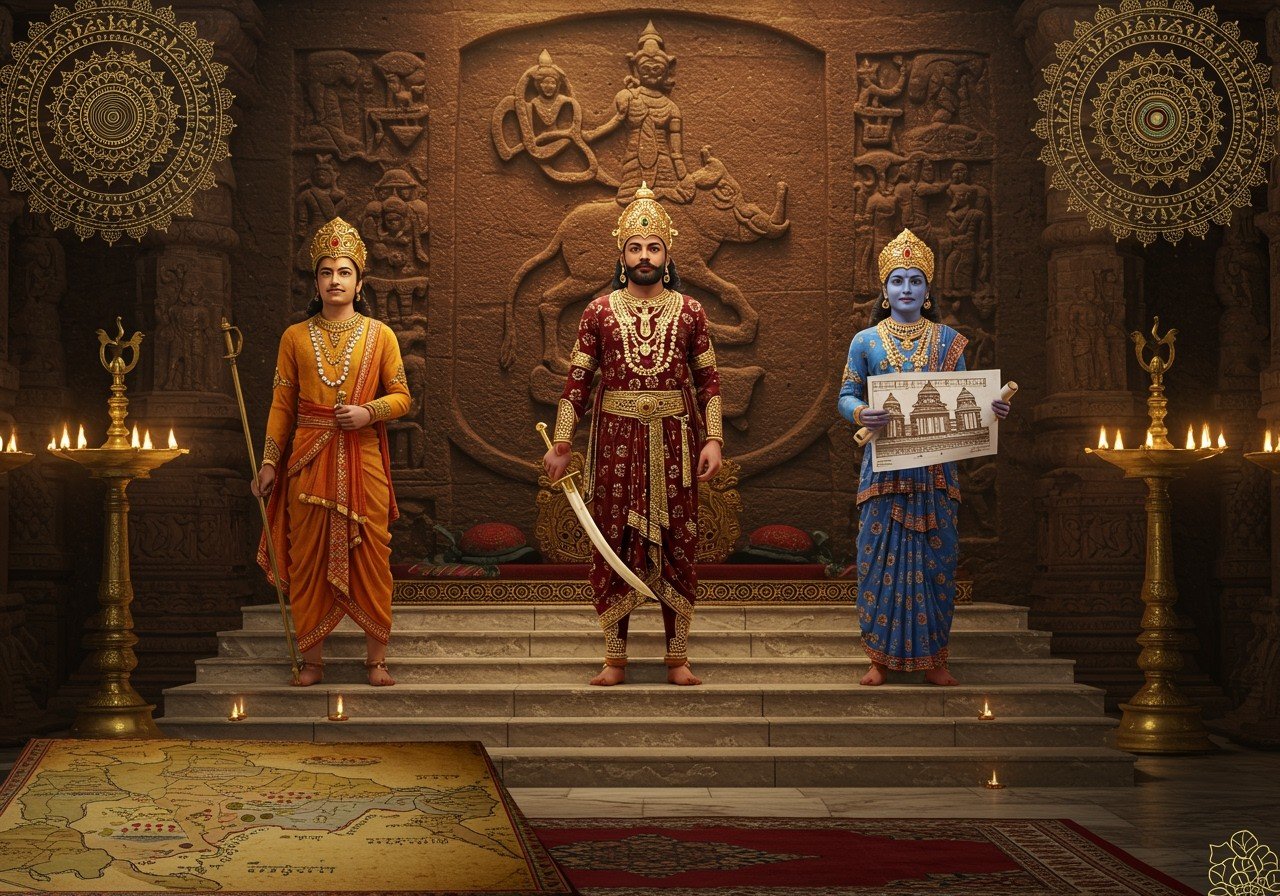
The Chalukya Dynasty, a powerful force in southern and central India between the 6th and 12th centuries, left an indelible mark on the region’s history and culture. This dynasty, comprised of three related but distinct branches—the Badami Chalukyas, the Eastern Chalukyas, and the Western Chalukyas—shaped the political landscape and artistic heritage of the Deccan region. Jayasimha, the first ruler, laid the groundwork, but it was Pulakesin I who truly established the dynasty, founding their capital at Vatapi (modern Badami). Their reign stands as a significant period in Indian history.
Origins and Early Reign (6th – 8th Centuries)
The Chalukya dynasty originated in the Deccan plateau, establishing their first capital at Badami (present-day Vatapi). This era witnessed significant developments in architecture, marked by conflicts with neighboring kingdoms like the Pallavas and Kadambas. The Chalukya rulers were patrons of Hinduism, particularly Shaivism and Vaishnavism. Their administration, a structured system involving local chieftains, fostered a flourishing economy driven by agriculture, trade, and commerce. Furthermore, the early Chalukya period saw significant contributions to Kannada literature and art.
Prominent Rulers of the Badami Chalukyas
The Badami Chalukyas boasted a line of influential rulers who expanded the empire’s reach and ensured its prosperity. Pulakesin II, renowned for repelling Harshavardhana’s northward expansion and extending the empire across much of the Deccan, stands as a pivotal figure. Vikramaditya I, a skilled military strategist, consolidated Chalukya power through victories against the Pallavas. Kirttivarman I and Mangalesha oversaw a period of transition, notably contributing to the architectural landscape with the construction of the magnificent rock-cut temples at Badami. Queen Vijaya Bhattarika played a unique role in governance, demonstrating the dynasty’s inclusive leadership. These rulers implemented administrative reforms, strengthening the empire while generously supporting art, culture, and religion, leaving a lasting legacy in the Deccan.
If you’re interested in exploring artifacts and items related to Hindu rituals and traditions, consider visiting Poojn.in, India’s largest online store for cultural goods and services.
The Eastern Chalukyas (7th – 12th Centuries)
The Eastern Chalukyas, ruling the Vengi region, played a crucial role in shaping the history of Andhra Pradesh. Kubja Vishnuvardhana, the founder of this branch, established Vengi as their capital. Vijayaditya II further consolidated power through successful military campaigns. The Eastern Chalukyas also made significant contributions to temple architecture in the Vengi region.
The Western Chalukyas (10th – 12th Centuries)
The Western Chalukyas, also known as the Kalyani Chalukyas, held sway from the 10th to the 12th centuries. Tailapa II established Kalyani as the capital, marking a new era for the dynasty. Vikramaditya VI, one of their most celebrated rulers, is remembered for his effective governance and contributions to culture. His reign saw successful military campaigns against the Cholas and Hoysalas. Under his rule, notable temples and structures were built in Karnataka, further enriching the architectural heritage of the region. Queen Chandralekha wielded considerable influence in political affairs. The Western Chalukyas prioritized advancements in agriculture and trade, leading to economic prosperity. Their patronage extended to both Jainism and Hinduism, demonstrating their commitment to religious diversity.
Explore a wide range of puja items and spiritual products related to various Hindu deities and rituals at Poojn.in.
Cultural Contributions and Architectural Marvels
The Chalukya dynasty’s contributions to Indian art and architecture are truly remarkable. Their pioneering work in rock-cut architecture is evident in the stunning cave temples of Badami. They also excelled in structural temple design, exemplified by the Virupaksha Temple at Pattadakal and the Durga Temple at Aihole. These architectural achievements significantly influenced subsequent South Indian temple design. The Chalukyas also made significant contributions to sculpture and iconography, with intricate depictions of Hindu deities and scenes from mythology. Their patronage extended to literature, promoting Kannada and Telugu works. Music and dance flourished under their rule, further enriching the cultural landscape of the Deccan. The Chalukyas masterfully synthesized artistic styles from neighboring regions, creating a unique and vibrant artistic tradition.
Looking for specific items for your puja needs? Browse through a wide selection of products at Poojn.in (e.g., Bel malas) or Poojn.in (e.g., Shiva Lingams).
Conclusion
The Chalukya Empire’s enduring legacy stands as a testament to the vision and strength of its rulers. From the founding of Badami to the architectural wonders of the Western Chalukyas, their impact on Southern India’s culture and heritage is undeniable. Their contributions extended beyond political expansion to encompass a rich tapestry of artistic and cultural achievements that continue to inspire awe and admiration. By understanding their history, we gain a deeper appreciation for their profound influence on shaping Indian civilization.
Discover more about Indian temples and their history on Poojn.in’s blog. You can also find articles about other significant temples like the Bhoganandishwara Temple and the Kandariya Mahadeva Temple.


